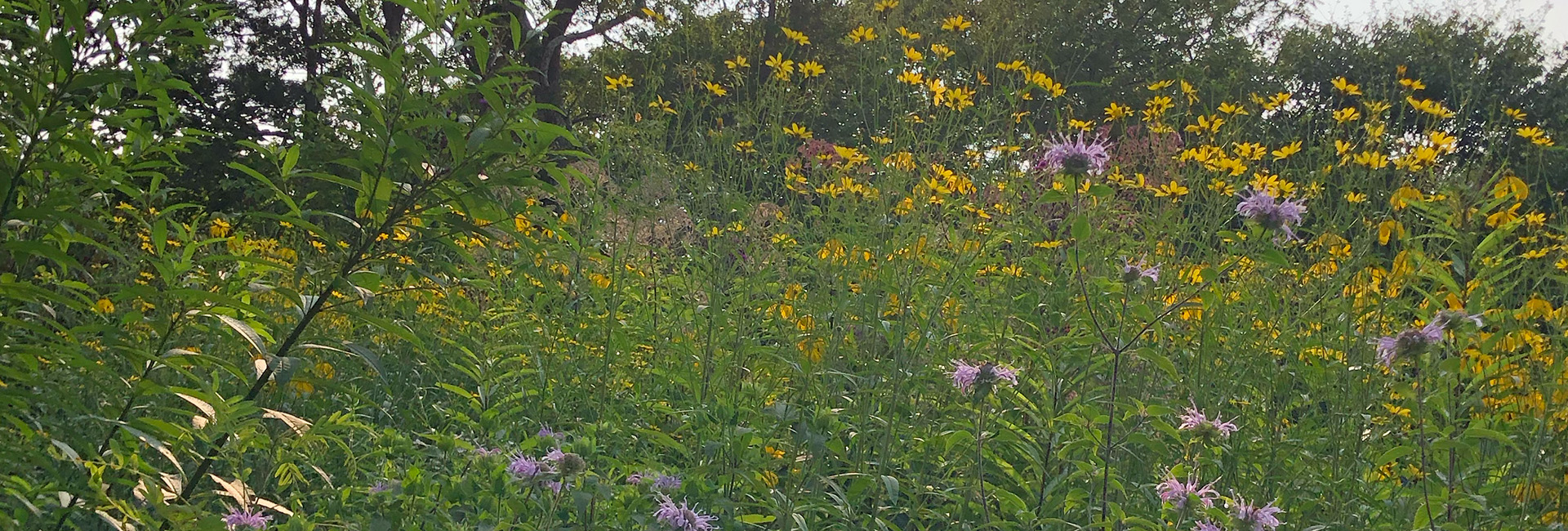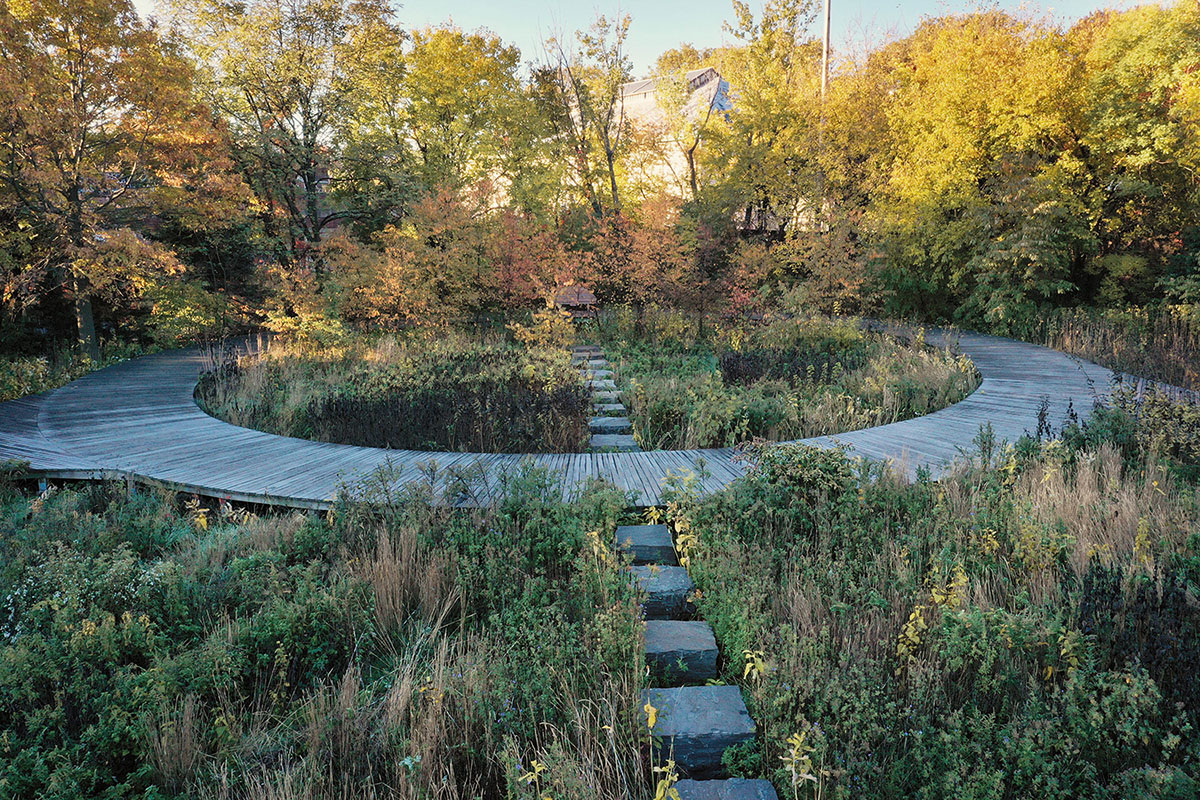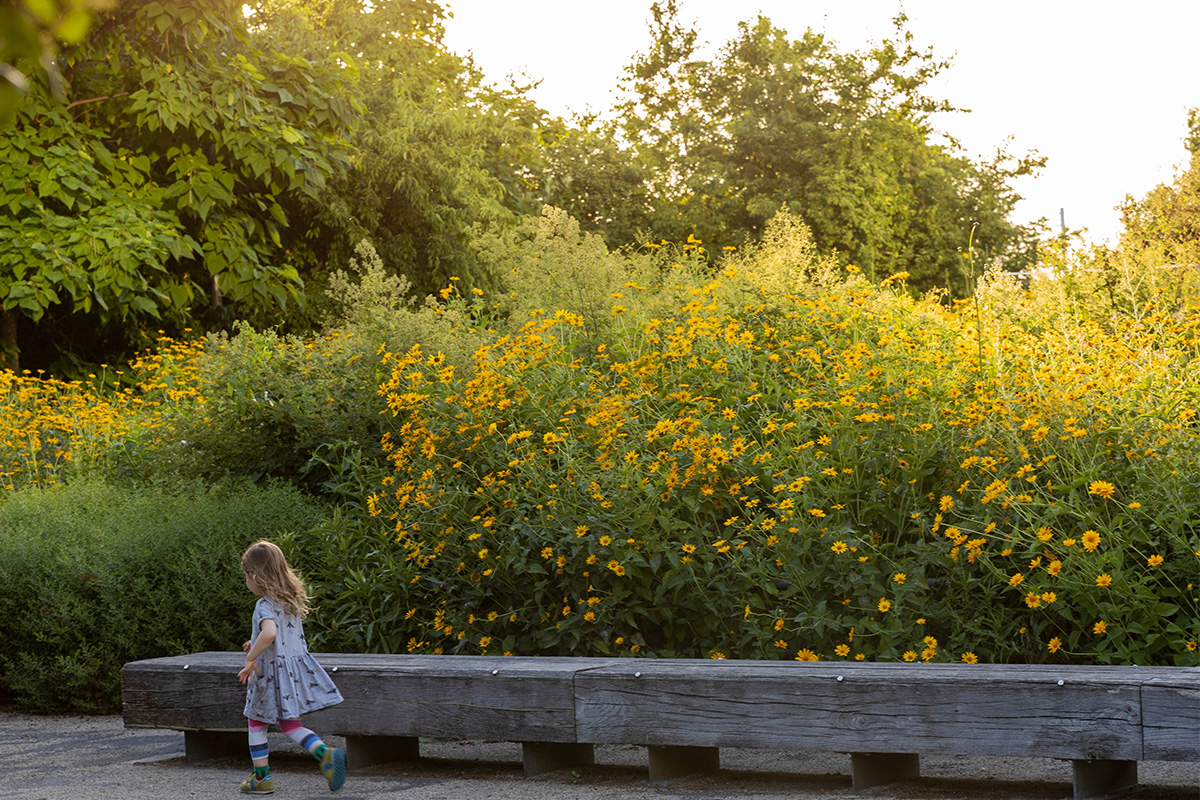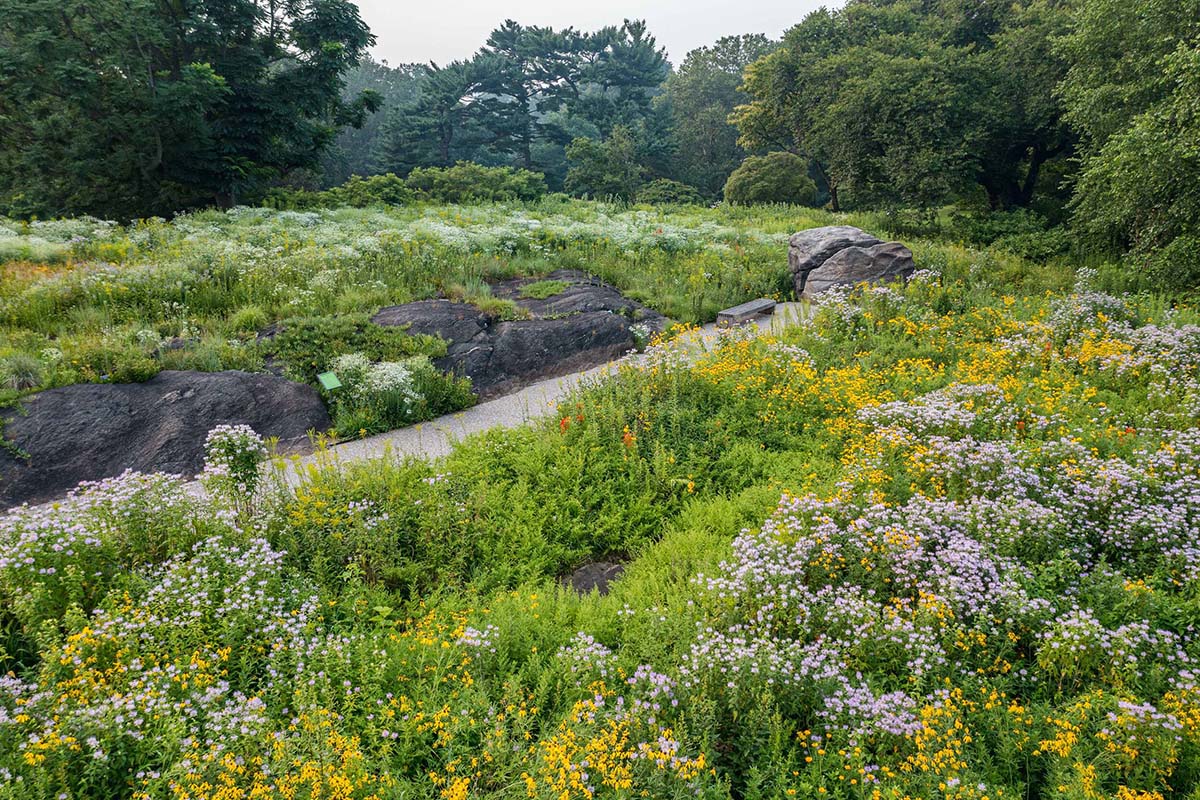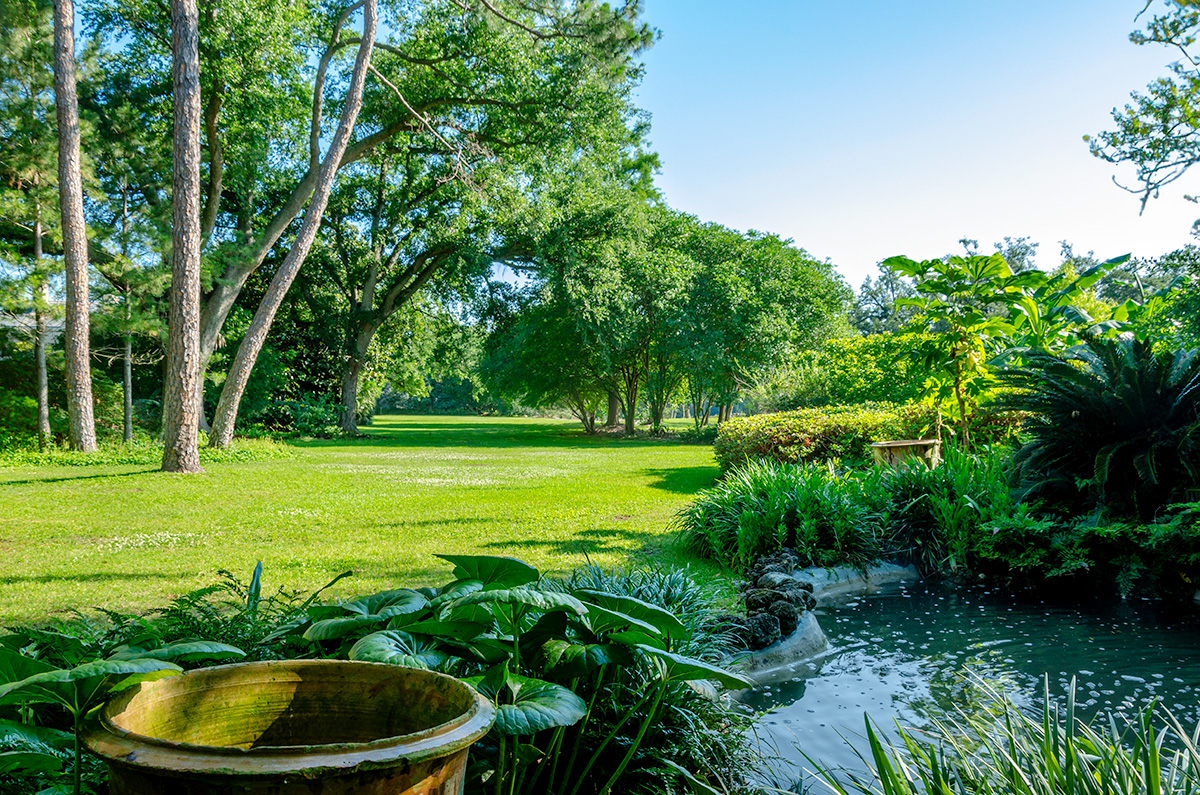
“I am more interested in nature than any other subject,” said Russel Wright, the influential mid-century industrial designer, who believed that good design was for everyone and created the best-selling dinnerware line in U.S. history. He channeled his passion for nature into Manitoga, the home and garden he built for his family on a 75-acre former granite quarry in Garrison, NY. “The place embraces you,” says Executive Director Allison Cross. “It is an example of living in harmony with nature through design.”
You won’t find large swathes of lawn at Manitoga. Instead, the landscape delights with native woodland plants, trees, and moss. Photo by Rick Darke.

Wright wove nature throughout the house, incorporating rocks, boulders, and trees from the property into the interiors, and even changing the décor to reflect the different palette of the seasons: “cool and refreshing” tones for summer and “warm and snug” reds and golds in winter.
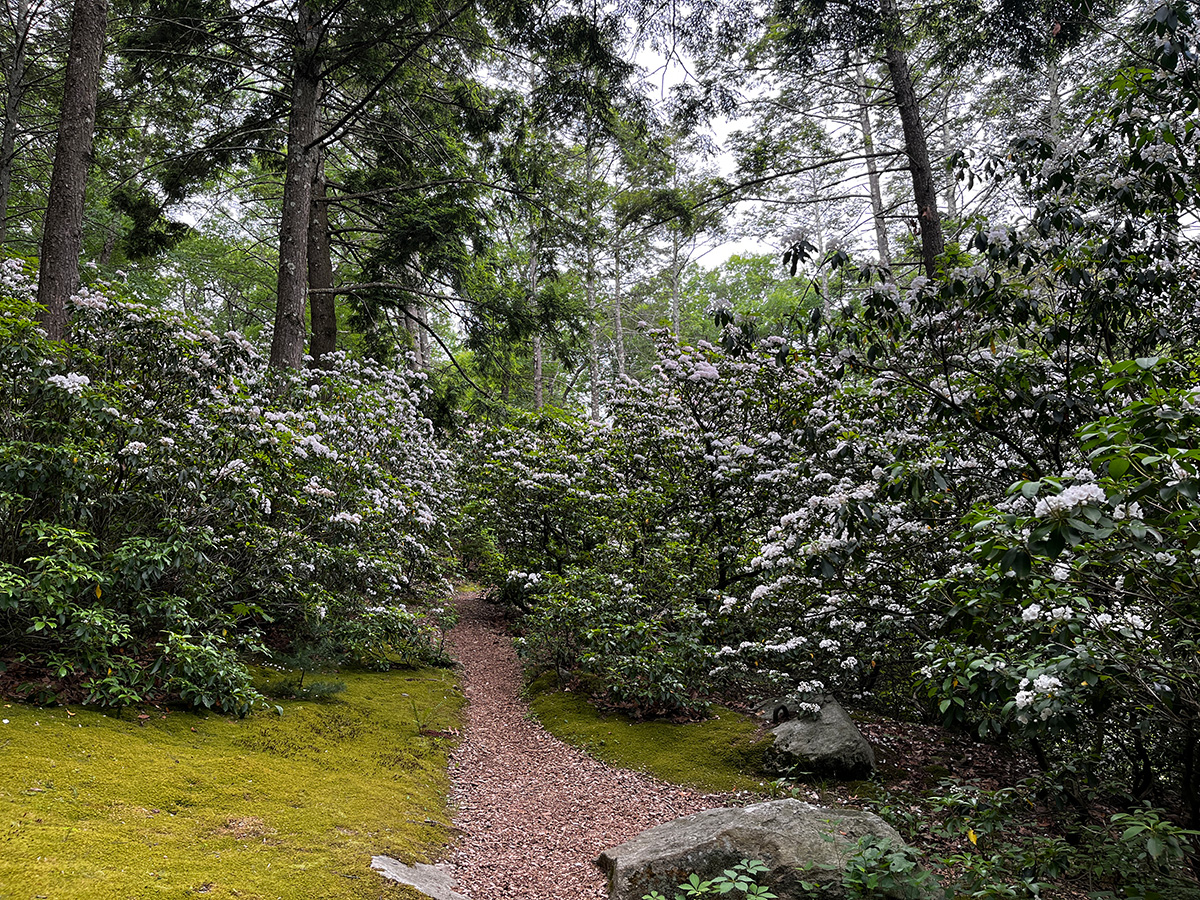
Outside, he choreographed the landscape, which he described as the “most interesting bits of land that I have seen anywhere in the world” to enhance its natural beauty. He moved boulders, created a waterfall by redirecting a stream over the quarry’s cliff leading to a natural pool, encouraged moss by weeding out the competition, cultivated indigenous plants, and gently thinned areas to create vistas. He also carefully constructed miles of pathways, so that visitors could share in, as he wrote in A Garden of Woodland Paths, “the beauties I discovered.” When friends asked how he found such a beautiful site, Wright recalled, “These friends think that I found it this way, and therefore I know it looks natural.”
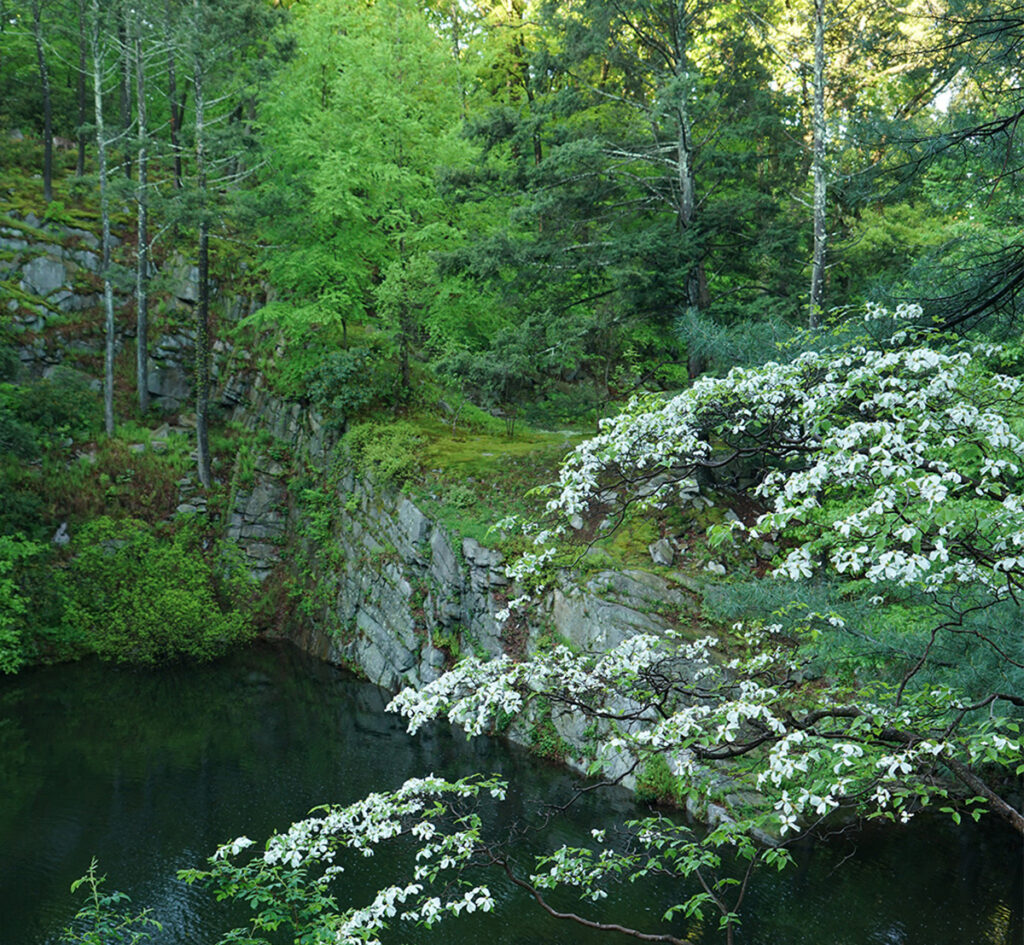
“This is a garden that uses the materials of the place. The plant communities and habitats found on the land, the granite cliffs, the glacial boulders, and the little streams,” writes Franklin in Manitoga’s Design and Management Guide. Photo by Rick Darke.
Today, the garden stands as a testament to Wright’s vision, beautifully maintained by Manitoga’s expert staff. “It’s a really resilient property,” says Emily Phillips, the Landscape Curator. The secret to its resilience is a landscape teeming with native plants. “[Wright] planted them densely and as a result we don’t have the intense invasive problem that a lot of gardens have,” she says. “We have the right plants in the right places,” she says. Mountain laurels, which Wright once described as “strawberry ice cream,” bloom in the woodland’s understory. A sea of bluets covers the ground in spring. And in summer, Phillips notes, there are “lush green swathes of ferns and cool pools of moss.”
“The protective land which many of us have acquired around our weekend places need not be an unloved, unenjoyable tangle. It can be much more than a wall separating you from your neighbors. With small effort, it can become a wonderland for your children, or a revitalizing stroll for your guests,” Wright writes in A Garden of Woodland Paths. Photo by Rick Darke.
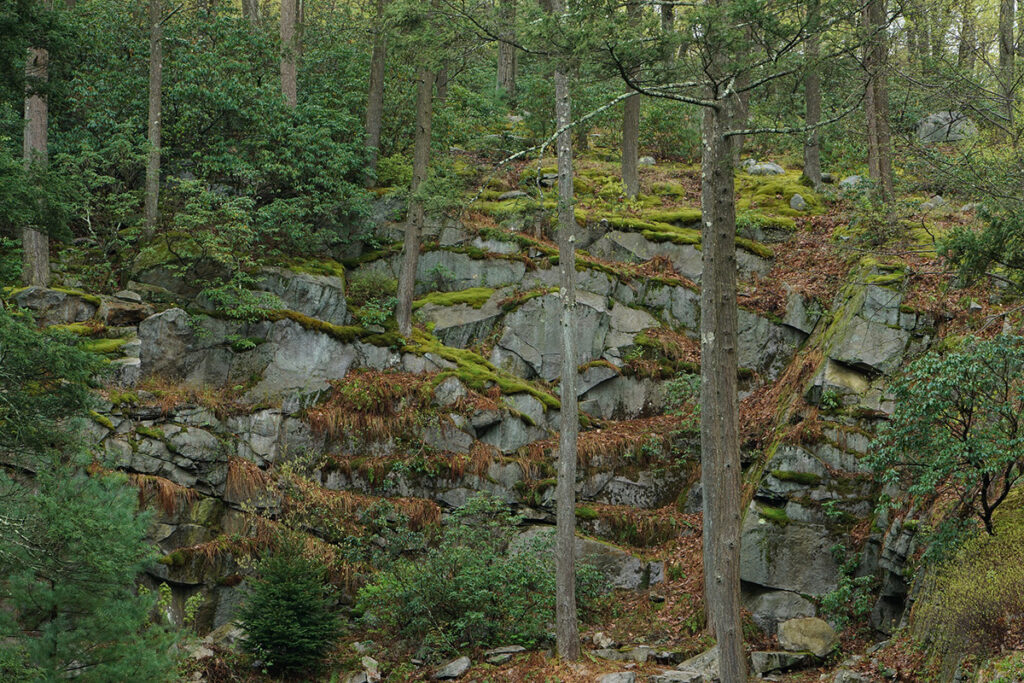
But climate change has caused intense and unexpected storms, and with them, extensive runoff. The storm surges have created rivers of invasive stilt grass coming from neighboring properties. While Manitoga’s staff applies for funding to help figure out long-term solutions, its gardeners are making use of on-site materials to stave off more damage. They are building “beaver-like dams” from fallen limbs and brush to orchestrate the flow into the wetlands. They are constructing “log jams” to curb storm surges. To add diversity to the banks, they are “augmenting stream buffer planting.” And they are carefully protecting regeneration of oaks and hemlocks (the latter of which have been struggling with hemlock woolly adelgid) and cultivating an understory of native shrubs, such as viburnum and mountain laurel.

“These lithe multi stemmed grey birches were named ‘The Martha Graham Girls’ by a friend of the Wrights, who likened their movement in the wind to the dancers of the era. Grey birch are pioneer trees. Russel Wright enhanced the sensual experience at this spot with a carpet of soft moss,” notes Phillips. Photo by Ketchum.
“Wright wanted Manitoga to be a place of discovery,” says Phillips. And more than 80 years after he first bought the property, it still is. Cross hopes visitors will slow down when they come to let the place speak for itself.
Native bluets (Houstonia caerulea) carpet a moss room in spring. “Manitoga inspires creativity,” says Executive Director Allison Cross. Photo by Melissa Ozawa

Absorb the sounds of the waterfall, the bird song, the rustling of leaves. Look for splashes of wildflowers, carpets of moss, stands of ferns. Feel the textures of a rock. Gaze skyward at the trees, crouch down to see miniature wonders at your feet. Breathe. Let the landscape reveal itself to you. Every visit will offer a new discovery.
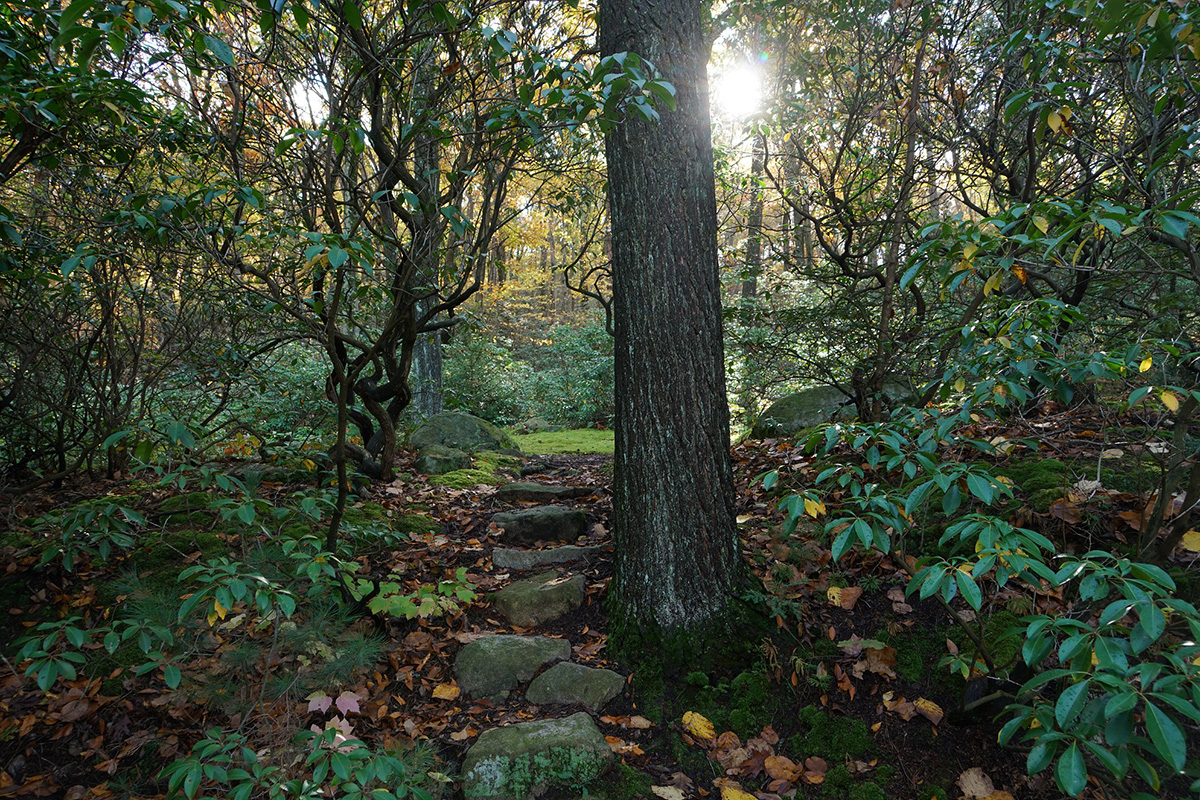
Manitoga, which is the Algonquin word for “place of great spirit,” is open by guided tour from mid-May through mid-November. Learn more about visiting here.
by Melissa Ozawa
This is part of a series with Gardenista, which ran on June 27, 2024.
